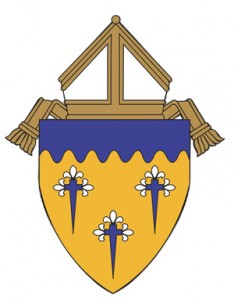Fr. Dennis Mullen
Note: The permanent diaconate for the Diocese of Superior was instituted by Bishop George Hammes about 1975, appointing Fr. Dennis Mullen to design and implement the program. He was assisted by a board of directors who advised, revised and reviewed the candidates’ applications. Fr. Mullen was soon joined in leadership role by Fr. Joseph Willger.
It was evident to me that we were on the cusp of a severe decline of priestly vocations, and that would hit us hard, given the fact that throughout the United States, seminaries were closing and numbers of seminarians were drastically declining. Pastoral ministry in our diocese would be greatly diminished, and many who needed the graces and support of trained ministers would have to be without– sheep without a shepherd.
The program had the support of Bishop Hammes, but not all the clergy. Some objected to their married state undermining the committed celibate lifestyle of priests; others thought the permanent deacons would become “little” priests; others were afraid of their position as pastor would be undermined.
We engaged in a lot of consultation, especially with the Diocese of Green Bay and the Archdiocese of Saint Paul, with the intent to design a program suitable to our needs, the needs of the diocese and our varied parishes, and fitting the variety of candidates we expected to apply. From that, we built a four-pillared or -principled program that would guide the development of the program.
First pillar: A permanent deacon would serve on a volunteer basis the needs of the local parish/community. If he took a salaried position, it would be on the basis as anyone else hired by the parish.
Second pillar: A permanent deacon must establish for himself the priorities of family, job, then diaconal service.
Third pillar: The service of a permanent deacon would be based on his talents, which are then trained to provide the best service he could give. With a variety of talents, no two deacons would have the same kinds of service. For instance, we did not assume that every deacon would be comfortable or capable of being an effective homilist, thus some deacons would be granted the faculty to preach, others would not. (In fact, homiletic training was an add-on after ordination.)
The fourth pillar was merging these pillars into a workable service agreement that met the real service needs in the parish/community and protected the priorities of the deacon. Because the deacon is driven to selfless service to others, even at times to his or his family’s detriment, the service agreement gave him the power to say “no” when he had to.
It was decided that the training sites would be local and the instructors would be competent trainers in their various fields. Trainers from outside of the diocese came mostly from the Archdiocese of Saint Paul. Training sites were all held within the diocese and circulated to make travel time and distance more equitable.
The intended parish to be served was to pay the expenses of training, including overnight accommodations, mileage and childcare, if needed.
The first permanent diaconate ordinations were celebrated in St. Robert Bellarmine parish church in Merrill.

